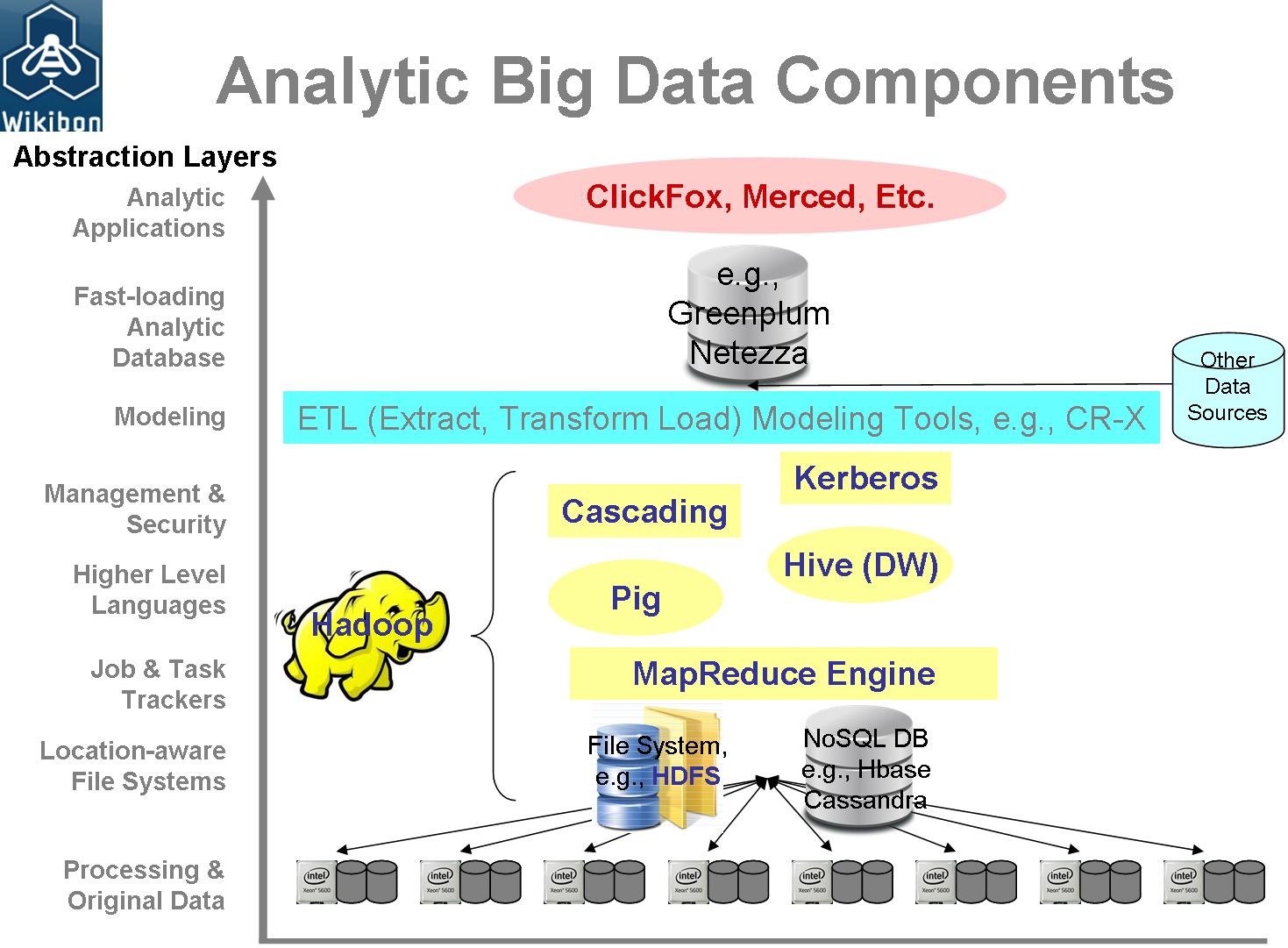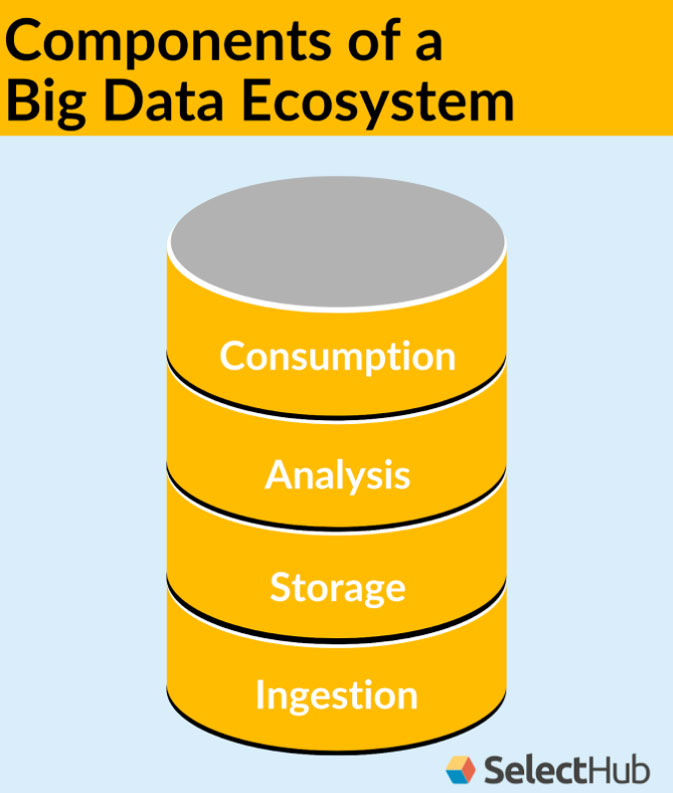What Are The Main Components Of Big Data?
Big data is a term used to describe the large volume of data that is generated from various sources. It is an umbrella term for any dataset that is too large or complex for traditional data processing applications to handle. Big data is often characterized by its four “V”s: velocity, variety, volume, and veracity. The main components of big data include the data itself, its storage, its processing, and its analysis. Data storage is the first step in big data management, and there are a variety of ways to store and access data, such as relational databases, NoSQL databases, Hadoop, and cloud-based services. Big data processing includes techniques such as parallel processing, data integration, machine learning, and natural language processing. Finally, big data analysis involves using tools such as data mining, predictive analytics, and visualization to extract insights from the data. All of these components are necessary to make sense of the data and to turn it into useful information.
Definition and Characteristics of Big Data
Big Data is defined as the collection of large, complex datasets that cannot be managed or analysed using traditional data processing methods. It is typically characterised by its high volume, variety, velocity, and veracity. The volume of Big Data refers to the amount of data that is collected and stored, while the variety of it comes from the different sources and formats of the data. The velocity of Big Data is determined by the speed at which it is generated and processed, while its veracity deals with the accuracy and consistency of the data. Big Data is used to analyse trends, create predictive models, and uncover hidden insights. It helps organisations to make smarter decisions, improve customer experience, and increase efficiency.
Sources of Big Data
Big Data is a term used to describe the exponential growth and availability of data, both structured and unstructured. Sources of Big Data can be found in a variety of places, ranging from traditional sources such as customer databases and transaction records to newer sources such as social media, web logs, and machine-generated data. All of these sources can be used to gain valuable insights into customer behaviour, market trends, and more. By collecting and analysing data from these sources, businesses can gain a deeper understanding of their customers, allowing them to make more informed decisions and better serve their customers. As the availability of Big Data continues to grow, so too do the sources from which it can be gathered. Businesses are beginning to tap into the power of Big Data to gain a competitive advantage and inform their decision making.
Disadvantages of Big Data
Big Data has become an increasingly important part of modern life, with the ability to store and analyze massive amounts of information. However, there are a number of potential disadvantages associated with Big Data. For example, companies may not have the resources or technical expertise to effectively manage large data sets. Additionally, the use of Big Data poses privacy and security concerns, as the data is essentially a record of people’s activities and preferences. Furthermore, the sheer volume of data can be overwhelming, and it can be difficult to draw meaningful insights from it. Finally, there are legal implications to consider, as data collection must adhere to certain regulations. Overall, Big Data can be a powerful tool for companies, but it is important to consider the potential drawbacks before relying too heavily on it.

Big Data Analytics
Big Data Analytics is a revolutionary technology that enables businesses to gain valuable insight from vast amounts of data. By focusing on the analysis of large datasets, it provides a powerful method for discovering trends, patterns, relationships and correlations within the data. With the help of Big Data Analytics, businesses can gain an in-depth understanding of customer needs, behaviors and preferences, as well as quickly identify areas of improvement and opportunities for growth. Big Data Analytics allows businesses to make more informed decisions and reach their goals faster. With the help of this technology, businesses can unlock the power of their data and turn it into actionable insights to drive success.
Challenges of Big Data
Big Data is an increasingly important part of modern business. As the amount of data produced and stored continues to grow exponentially, organizations are faced with the challenge of managing and analyzing vast amounts of data. Big Data can provide organizations with valuable insights, but it also comes with its own unique set of challenges. Companies must be able to store, manage, process and analyze large volumes of data quickly and cost effectively. Additionally, organizations must ensure that their data is accurate, secure and compliant with regulations. Finally, companies must also be able to leverage data to make informed decisions, which can be daunting without the right skills and resources. While the challenges of Big Data can seem daunting, they can be overcome with the right planning, resources and expertise.
Benefits of Big Data
Big data has revolutionized the way businesses operate, making it possible to collect, analyze and act upon vast amounts of data in a short amount of time. The benefits of big data are vast and far-reaching, from improved decision-making capabilities to new insights into customer behavior. By leveraging the power of big data, businesses can gain valuable insights into their customers, market trends, and operations. This can result in improved customer service, better product development, more efficient processes, and greater financial success. Big data can also help to identify customer needs and preferences, enabling businesses to deliver personalized services that meet their customers’ needs. Finally, big data can be used to uncover previously unseen opportunities, such as new markets and untapped customer bases. With the right tools and strategies in place, businesses can unlock the potential of big data and reap the rewards of a more profitable, efficient, and customer-centric operation.
FAQs About the What Are The Main Components Of Big Data?
Q1. What is the definition of Big Data?
A1. Big Data is a collection of large and complex data sets that cannot be processed using traditional data processing techniques. Big Data typically includes high-volume, high-velocity, and/or high-variety information assets that demand cost-effective, innovative forms of information processing for enhanced insight and decision making.
Q2. What are the main components of Big Data?
A2. The main components of Big Data are Volume, Variety, Velocity, and Veracity. Volume refers to the amount of data, Variety refers to the different types of data, Velocity refers to how quickly the data is changing, and Veracity refers to the accuracy and trustworthiness of the data.
Q3. What are the benefits of using Big Data?
A3. Big Data can help businesses to become more efficient and competitive by enabling them to gain valuable insights from their data, identify patterns, and make timely decisions. It also helps organizations to reduce costs, make better decisions, and improve customer experience.
Conclusion
Big Data is a term used to describe the vast amount of data that is collected, stored, and analyzed. It has become an increasingly important tool for businesses and organizations to better understand their customers, market trends, and customer behavior. The three main components of Big Data are data storage, data analysis, and data visualization. Data storage is the process of collecting and storing large amounts of data in a secure environment. Data analysis is the process of analyzing and interpreting the data. Finally, data visualization is the process of presenting the data in a meaningful and visually appealing way. By harnessing the power of Big Data, businesses and organizations can gain valuable insights that can help them make informed decisions and improve their operations.





